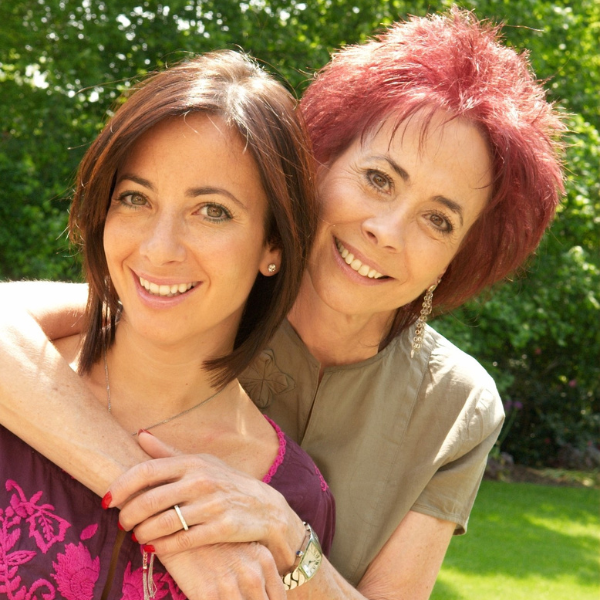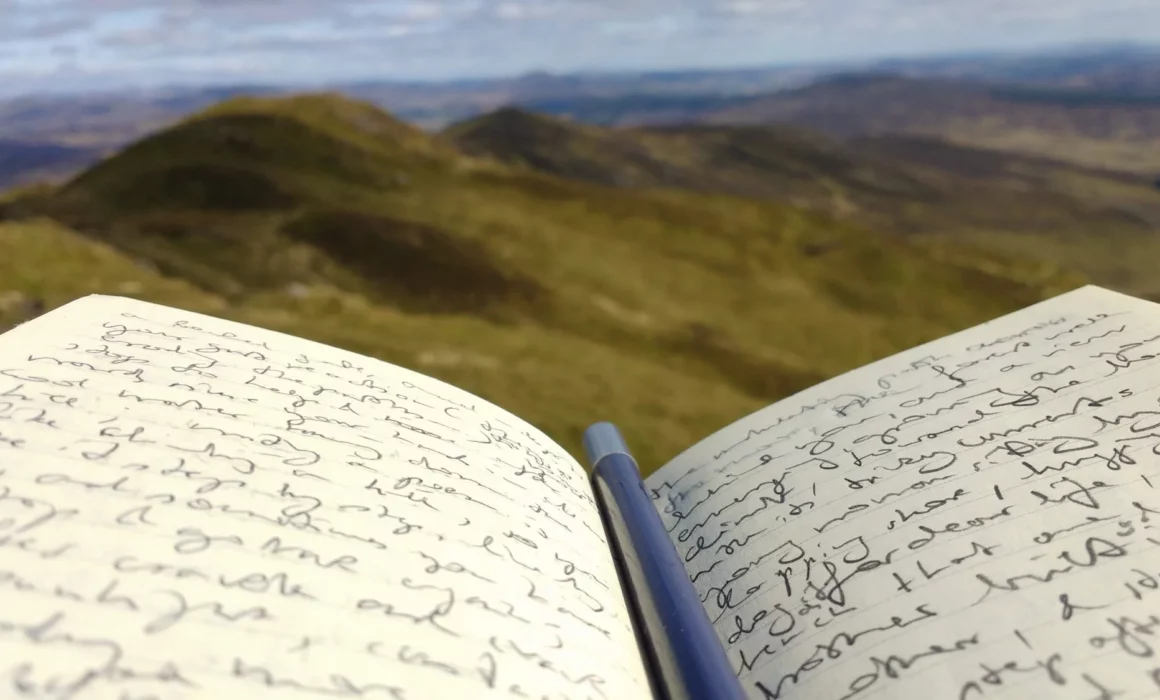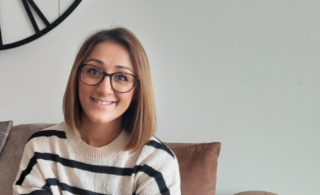
Let's Nail Breast Cancer - Help support our urgent appeal on the 19th - 20th May 2024
Let's Nail Breast Cancer - Help support our urgent appeal on the 19th - 20th May 2024
Let's Nail Breast Cancer - Help support our urgent appeal on the 19th - 20th May 2024
Let's Nail Breast Cancer - Help support our urgent appeal on the 19th - 20th May 2024
Let's Nail Breast Cancer - Help support our urgent appeal on the 19th - 20th May 2024
There are many different things that can help someone deal with a cancer diagnosis and this article explores how creativity can be especially helpful.
By Marie Isabel
When I was told I had cancer, I was at first very much afraid but also determined to do everything possible to get rid of it. Soon, however, I found myself unable to feel or think much at all. The world simply looked grey, and it felt awfully narrow, as if I was now existing under the metaphorical bell jar. And I had no idea how to escape from under it.
At this time of crisis, I turned to something I love: photography, visual art, and writing – in all of which I had dabbled for many years. Long ago, I had heard about the therapeutic benefits of art and music and writing therapies. Now I hoped they would help me. With this in mind, and while undergoing treatment, I embarked upon a range of creative activities.
First, I began taking selfies more or less every day. I wanted to record what was happening to me, how surgery, chemotherapy, radiotherapy, and hormone therapy were changing my body. Looking at the photos allowed me to see myself with more distance and recognize myself in the stranger that was staring back at me from the mirror in the mornings. Over time, the pictures made what was a seemingly surreal experience feel a little more real.
I also took photos on my daily walks, when I came across something – such as a plant, a path, or an architectural structure – that echoed a feeling or thought I had at the time. Posting the image together with a caption on social media was like sending a message in a virtual bottle out to family and friends without having to be too specific. I found doing this both therapeutic and empowering.
Finally, the photos gave me a sense of continuity and helped me mark positive events: under the bell jar, time could slow down until it was barely noticeable, or it felt oddly disjointed. Not only did the images prove that time was indeed progressing, they also reminded me that I had lots to be grateful for: be it the desserts my husband made to cheer us up, the thoughtful presents friends sent to me, or the joyous colour of a blossom in spring.
While taking photographs in my own time proved helpful, I was also keen to participate in professionally-led therapy: that is why, after two surgeries, I participated in an expressive art workshop and later, when I had already started chemotherapy, took part in an expressive writing workshop. Both workshops ran across several weeks at my local Maggie’s Centre and became a real lifeline. Not only did the creative activities we engaged in have a positive effect on my well-being: the sessions also gave me something to look forward to every week as well as a much-needed chance to socialize with people in a similar situation in a safe, non-medical space.
Art therapy began to slowly thaw the emotional and mental iceberg inside me. Since there was no prescribed theme, I decided very early on to approach the sessions with an open mind, to try out different materials and follow their lead, and to explore whatever idea occurred to me shortly before or in any given session, without overthinking it. One day, for instance, I chose to use acrylic paint simply because its bright, uplifting colours felt like the right thing to work with on that particular morning.
I soon realized that the process of creating was at least as, if not more important than the end result. When I didn’t fully understand my own piece, discussing it with other members of my group helped me gain a new perspective on what I had been trying to say through the medium of art. I also benefitted greatly from looking at other people’s artwork and from hearing their stories.
Expressing and sharing thoughts and emotions with others in this way made me feel less alone in cancerland; positive feedback on my pieces boosted my confidence; my usual obsession with perfectionism gradually faded, making space for a kinder, more caring way of interacting with myself.
I had similar experiences in the Maggie’s writing workshops, but the latter affected me differently. Art therapy had helped me get in touch with emotions that my initial reaction to the cancer diagnosis had buried deep away, and identify some hopeful thoughts I could focus on in the long term. Writing therapy had a more generally liberating effect – not least because it inspired me to write more freely and more regularly, and, importantly, to respect what I had written.
The exercises in journaling and creative writing we did included making lists of sensory impressions – what we saw, heard, smelt, felt, tasted at a given time –, writing about memories – from yesterday evening to childhood –, and composing a fairy tale together with other members of the group. This last task made us laugh so much we ended up entertaining everyone in the Maggie’s kitchen outside the doors of the room we were writing in.
Trying my hand at different types of writing was fun, full of surprises, and provided a release for all kinds of thoughts and emotions. Group discussions of what we had written often became a springboard for voicing feelings about cancer and treatments as well as sharing thoughts on life in general. However, what made the most lasting impression on me was the fact that the workshops helped me re-claim my notebook as a truly private space: a space that I – unlike with most things in life, especially at that point – had some control over; a space that I could use as I saw fit without fearing anyone’s judgement – not even my own.
I began to carry a small notebook with me wherever I went and made notes of feelings, ideas, and observations as and when they occurred. Filling the pages of a journal became a form of mental housekeeping that could be put to all kinds of uses: whenever, for instance, the hamster wheel of anxious thinking was beginning to speed up inside my mind, paper and pen would help me stop it, or at the very least make it go more slowly.
Together, the two types of therapy enabled me to emerge again from under the bell jar. I learnt how to use creative activities as a means to deal with the psychological fallout of a cancer diagnosis and of the treatments I underwent. On top of that, the skills and experience gained in the workshops gave me the courage to try out new things: while still going through chemo and then radiotherapy, I submitted two of my artworks for an exhibition on the relationship between mental health and art in Edinburgh, and I participated in the Scottish Book Trust’s annual story project with a text that reflected on my travels through cancerland.
Now that I have finished hospital-based treatment, I continue to take photos, make art, and write as part of my ongoing recovery – and I keep trying new things: most recently, I took up a 30-day art-journaling challenge, and I am trying out free writing as a form of meditation. I also intend to return to one of my local Maggie’s centres for more art and writing therapy as part of my recovery.
The beauty of creative activities such as the ones I embarked upon is that you really don’t need that much to get started: just take your mobile phone (or camera), pens and paper – and get started. Of course, there are also many, many other creative or crafty things you can do – make music, bake, knit, do pottery, etc. The only important thing is to find something that feels right for you, something that helps you relax and calmly and positively stimulates your senses, something, in short, that nourishes your mind and, through that, your body, too.
If I may, I would like to add a few tips (in no particular order), just to get you started:
- There are various ways of choosing which creative activity or therapy might be beneficial for you. Something may appeal to you because you used to like (doing) it when you were younger, or because it relates to something else you enjoy (like reading does to writing, for instance). Or you might want to try out something new – maybe even something you’ve always wanted to give a go but never did.
- Don’t be afraid to join a therapy group because you fear you won’t know what to do or that what you’ll do won’t be ‘good enough’. The groups are led by professionals who know how to create a space that is safe for everyone, confidential, and free from pressure or judgement. Just try to be open to the experience and focus more on the process than on any results.
- Whatever activity you choose, make a conscious attempt to let go of your inner ‘judge’, of that little (and sometimes very loud) voice that keeps telling you that this is how things are done and not otherwise. You’re in an extreme situation when faced with a cancer diagnosis and, although it might challenge you, it can also help deal with this situation if you allow yourself to push the boundaries of what you’re familiar with and explore new creative territory.
- If you don’t like to join a group, there are plenty of activities you can do on your own, and there are many free online sources that can help you get started; some also provide a virtual context (such as a Facebook group) in which to share your creative output (should you want to do that).
- If, at any point, you lack the energy to become creative yourself, you might find that you can gain considerable benefit from the products of the creativity of others, be it through reading, listening to music, looking at a painting, or watching a film or show that you love.
Remember: our imagination is a powerful resource, and it can be used to give us solace and help us heal – whatever challenge we are faced with.
To return to the homepage of our Information Hub, click here where you can access more helpful information, practical advice, personal stories and more.
Future Dreams hold a range of support groups, classes, workshops and events to help you and your carers during your breast cancer diagnosis – these include many creative workshops. These are held both online and in person at the London-based Future Dreams House. To see what’s on offer and to book your place, see here.
November 2019 (Reviewed February 2024)
This article was written by a guest author based on their own experience of breast cancer and its treatment. It is important to note that this is one person’s experience and that whilst there may be commonalities between the experiences of different people, everyone has a different diagnosis/treatment plan/general experience. The information and content provided in all guest articles is intended for information and educational purposes only and is not intended to substitute for professional medical advice. It is important that all personalised care decisions should be made by your medical team. Please contact your medical team for advice on anything covered in this article and/or in relation to your personal situation. Please note that unless otherwise stated, Future Dreams has no affiliation to the guest author of this article and he/she/they have not been paid to write this article. There may be alternative options/products/information available which we encourage you to research when making decisions about treatment and support.
Share

Support awareness research
Donate to those touched by BREAST cancer
Sylvie and Danielle began Future Dreams with just £100 in 2008. They believed nobody should face breast cancer alone. Their legacy lives on in Future Dreams House. We couldn’t continue to fund support services for those touched by breast cancer, raise awareness of breast cancer and promote early diagnosis and advance research into secondary breast cancer without your help. Please consider partnering with us or making a donation.



